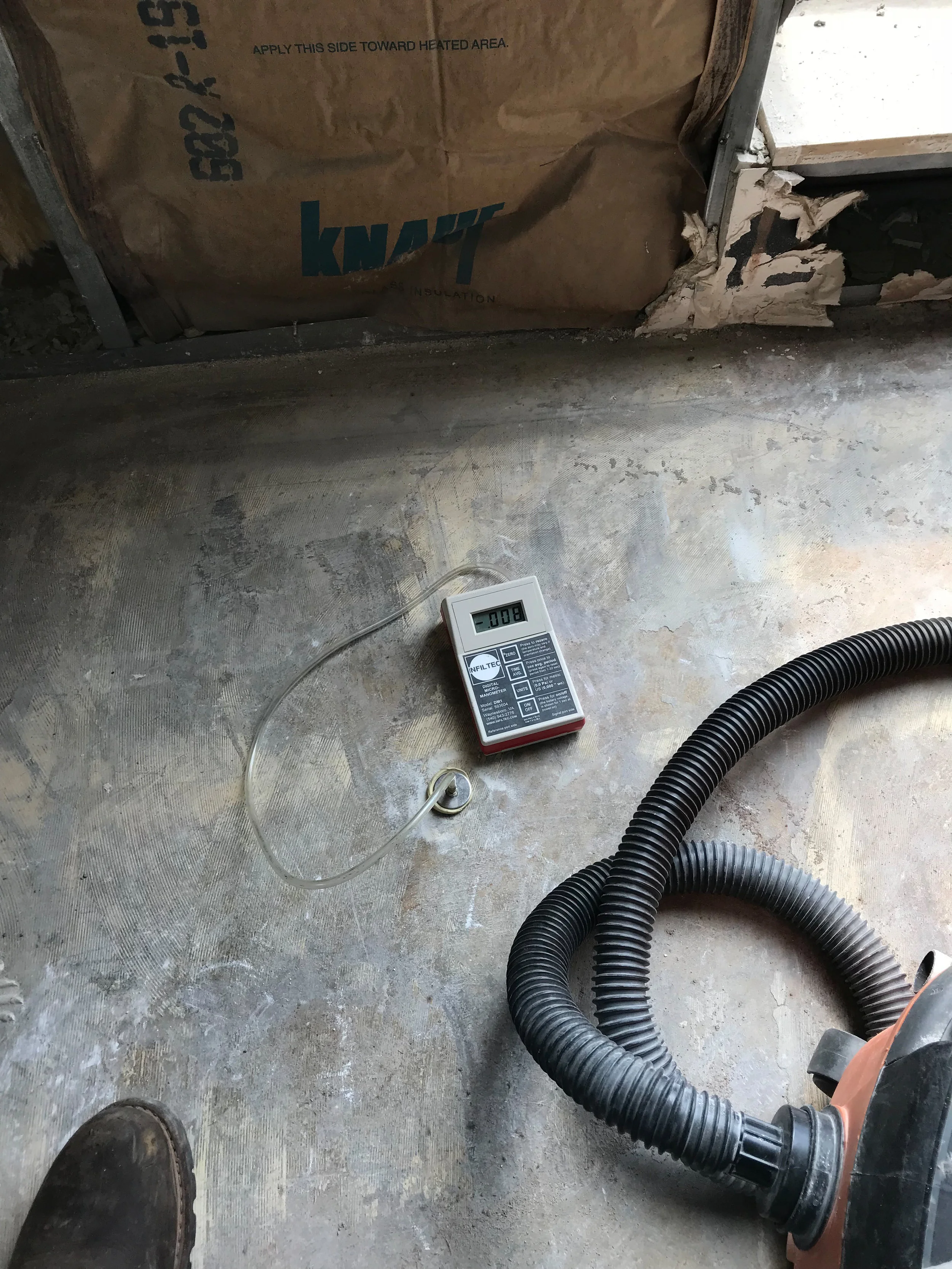California’s New Draft Supplemental Guidance for Screening and Evaluating Vapor Intrusion
/The Department of Toxic Substances Control (DTSC), State Water Resources Control Board (State Water Board), and San Francisco Bay Regional Water Quality Control Board released its Draft Supplemental Guidance for conducting vapor intrusion screenings and evaluations in California. The Supplemental Guidance promotes a state-wide standard practice and consistency for screening buildings for vapor intrusion and establishes appropriate sampling to protect building occupants from vapors off-gassing from contaminated sources.
Toxic vapors can move from contaminated groundwater and soil to indoor air, and vapors inside buildings can threaten human health.
The science behind vapor intrusion has been evolving quickly, and the Draft Supplemental Guidance provides information on the following topics:
Establishing a four-step evaluation process to assess soil gas, subslab, indoor air, and outdoor air sampling recommendations that are focused on understanding spatial and temporal variability
Recommendations for use of USEPA 2015 vapor intrusion attenuation factors
Risk management framework for vapor intrusion
Building a California-specific vapor intrusion database in Geotracker
Considering sewers as a potential VI migration route and pathway of exposure
Multiple Lines of Evidence
Vapor migration in the subsurface, through building foundations, and within buildings is complex and influenced by many natural and human-caused factors including:
Climate (e.g., temperature, pressure, precipitation)
Building Conditions (e.g., foundation type and status, age, size)
Heating, ventilation, and air vonditioning (HVAC) operation
The combination of these factors can result in significant variability in subsurface and indoor air vapor concentrations. With the potential for such high variability, the probability of false negatives increases – a concern that potential risks associated with vapor intrusion into indoor air will be underestimated.
Therefore, multiple lines of evidence should be used at vapor intrusion sites to reduce the considerable uncertainty. Multiple lines of evidence are used to provide a more comprehensive understanding of VI and to increase confidence in making site management decisions regarding vapor intrusion. Some lines of evidence may conflict, and this should be anticipated in the project planning process. Professional judgment should be used to support these evaluations.
Steps to Evaluate Vapor Intrusion
The Supplemental Guidance provides a consistent and proactive approach to evaluate buildings that may be at risk from vapor intrusion and a framework to decide when such risk should be managed, including:
Which buildings to sample first and how to screen them for vapor intrusion
When to screen buildings from outside and test indoor air within the buildings.
When additional steps are necessary
When sewers may contribute to vapor intrusion
What information to use to refine our approach
The overall cleanup should be designed when the contamination is fully understood and should consider the characteristics of each site.
Transport of Vapor Contamination Through Sewers
Sampling sewer air may be an important line of evidence in diagnosing the source of vapor forming chemicals in indoor air.
Vapors may enter sewer pipes that intersect contaminated soil or groundwater that may be off-gassing chemicals. Once inside the sewer pipe, chemicals can be transported beneath or directly into buildings. While sewer plumbing systems inside buildings are designed to prevent sewer gases from entering the building, many components of sewer systems leak or become compromised.
Some of the traditional ways to test for vapor intrusion could potentially miss vapor-forming chemicals moving through sewer pipes. Soil gas and groundwater sampling alone may not adequately evaluate the potential risk posed by chemicals in sewers.
KERAMIDA’s technical team have completed extensive studies and provided expert services on the subject of sanitary sewers as preferential pathways for vapor forming chemicals, and how the sewer pathway should be integrated into a vapor intrusion evaluation.
Vapor Intrusion Attenuation Factors
Attenuation factors are used to estimate how much of the vapors underground or in groundwater end up in the indoor air.
The Supplemental Guidance recommends the use of U.S. EPA empirically-derived attenuation factors for the screening of sites in California. These were calculated from a large study of buildings at contaminated sites around the nation, including California. These attenuation factors are protective of public health under most building occupancy scenarios and should be used for the initial screening of sites. Site-specific attenuation factors derived from mathematical models are not recommended for the initial screening of occupied buildings.
California Vapor Intrusion Database
The State Water Board has updated the GeoTracker database to accurately report vapor data and building-specific information.
The Supplemental Guidance provides direction on the new functionality of creating onsite and offsite building information and linking field points to appropriate buildings. Data from sites evaluated using the process described in the Supplemental Guidance will be entered in a database that will be publicly available. The State will analyze the information in the database and learn how to better protect the people of California from vapor intrusion. https://geotracker.waterboards.ca.gov/
A Supplement to Existing California VI Guidance
The Supplemental Guidance was developed collaboratively by the State agencies.
It is intended to supplement and, in places, supersede existing VI guidance published by each of these state agencies. The Draft Supplemental Guidance is intended to be used with existing State guidance when there is a spill or disposal of vapor-forming chemicals. This guidance does not apply to leaking petroleum underground storage tanks (USTs) since they are governed under State Water Resources Control Board’s Low-Threat UST Case Closure Policy.
U.S. EPA continues to use the framework set forth in its 2015 Technical Guide for Assessing and Mitigating the Vapor Intrusion Pathway from Subsurface Vapor Sources to Indoor Air at any site subject to Comprehensive Environmental Response, Compensation, and Liability Act (CERCLA) where vapor intrusion may be of potential concern.
The Draft Supplemental Guidance: Screening and Evaluating Vapor Intrusion is available for review and public comment until noon on April 30, 2020. There are a number of upcoming agency sponsored public information meetings this April.
Vapor Intrusion Specialists
As acknowledged by the regulatory agencies, evaluating vapor intrusion is extremely complex and professional support is recommended for those whose properties are potentially impacted.
Implementation of the Supplemental Guidance is anticipated to require more prescriptive vapor intrusion investigations and more active remediation and mitigation than in the past, so it is critical that any affected property owners and project proponents understand the new guidance.
KERAMIDA’s professional staff are experienced and knowledgeable of vapor intrusion concepts and the options for those working to achieve site closure and transfer properties with vapor intrusion concerns. If you have any questions about the regulation and how it may impact your facility, please contact us or call (800) 508-8034 today to speak with one of our experts.
KERAMIDA offers comprehensive vapor intrusion services from initial assessment through mitigation design and installation for both commercial and residential buildings. Our vapor intrusion professionals are experts in VI testing, mitigation, and sub-slab vapor remediation in all types of buildings and foundations.
KERAMIDA's Sacramento and L.A. offices provide Sustainability, Environmental, Health and Safety services tailored to meet the needs of California business and industry. Our Qualified Industrial Storm Water Practitioners (QISPs) assist with stormwater compliance, industrial stormwater permitting, SWPPPs, and more.
Contact:
Jodie Crandell, QISP, QEP, TOR
Senior Project Manager
KERAMIDA Inc.
Contact Jodie at jcrandell@keramida.com












